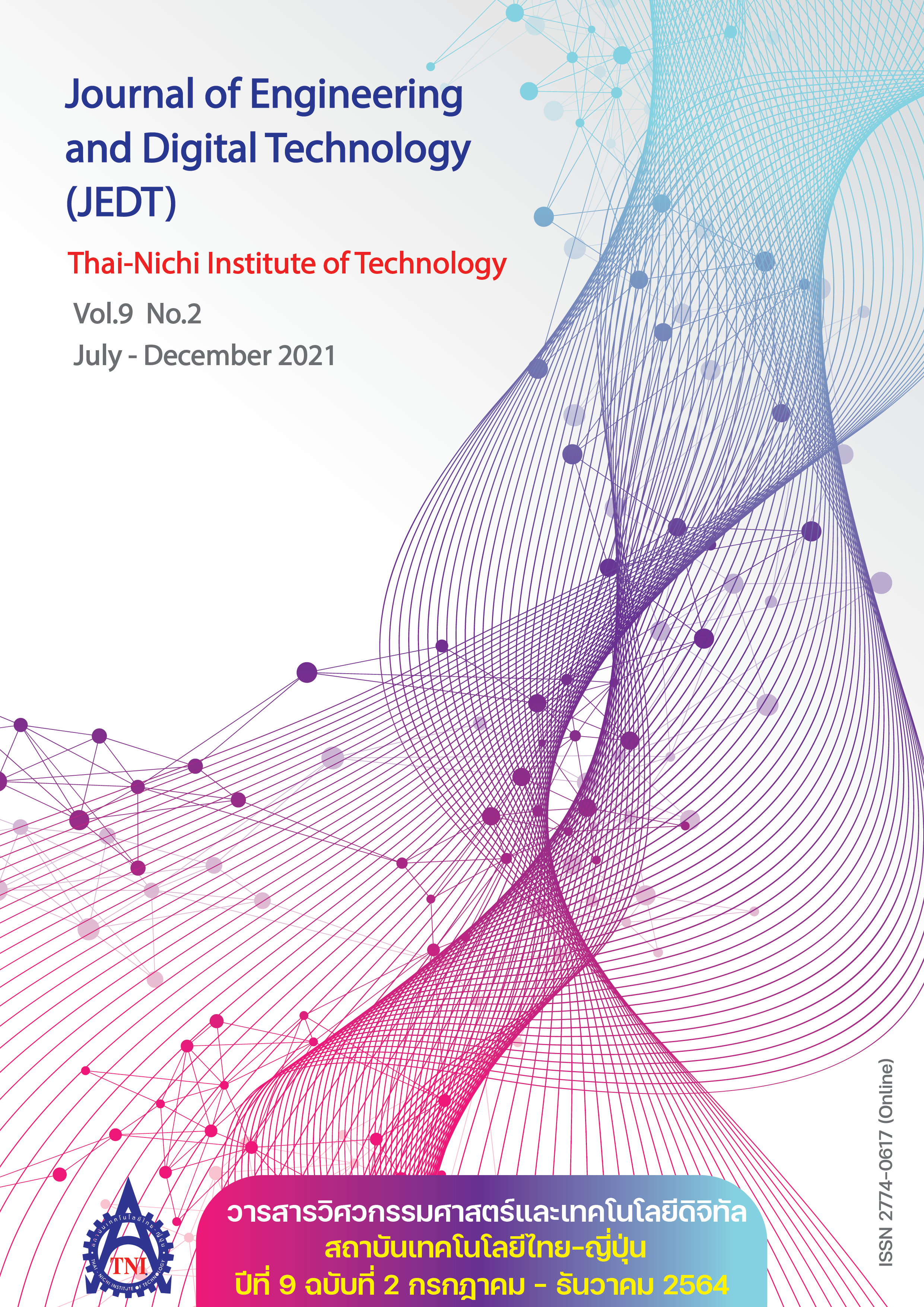Performance Evaluation of Consecutive Collision Avoidance Technique for Binary Tree Algorithm
Main Article Content
Abstract
Nowadays, RFID technology is very popular in tracking goods or users. But when there are more users in the system collision may occur. RFID technology has adopted Binary tree algorithm to solve the collision problem. The Binary tree algorithm is designed to resolve data collisions. When a collision occurs, the Binary tree algorithm divides the users involved in the collision into two groups. The users in the first group access the first slot and the users in the second group access the second slot. If the number of users in the system is relatively larger than the number of slots. For example, in the case of 50 users and 2 slots this can cause consecutive collisions, resulting in inefficient access to the channel. Therefore, this paper presents consecutive collisio n avoidance techniques for Binary tree algorithms. In the second consecutive collision, this technique proposes to increase the number of slots from 2 to 3 slots to reduce the chances of consecutive collisions. From the results, we found that the proposed technique can improve the performance of Binary tree algorithm, especially in cases where the number of users in the system is relatively greater than the number of slots.
Article Details

This work is licensed under a Creative Commons Attribution-NonCommercial-NoDerivatives 4.0 International License.
Article Accepting Policy
The editorial board of Thai-Nichi Institute of Technology is pleased to receive articles from lecturers and experts in the fields of engineering and technology written in Thai or English. The academic work submitted for publication must not be published in any other publication before and must not be under consideration of other journal submissions. Therefore, those interested in participating in the dissemination of work and knowledge can submit their article to the editorial board for further submission to the screening committee to consider publishing in the journal. The articles that can be published include solely research articles. Interested persons can prepare their articles by reviewing recommendations for article authors.
Copyright infringement is solely the responsibility of the author(s) of the article. Articles that have been published must be screened and reviewed for quality from qualified experts approved by the editorial board.
The text that appears within each article published in this research journal is a personal opinion of each author, nothing related to Thai-Nichi Institute of Technology, and other faculty members in the institution in any way. Responsibilities and accuracy for the content of each article are owned by each author. If there is any mistake, each author will be responsible for his/her own article(s).
The editorial board reserves the right not to bring any content, views or comments of articles in the Journal of Thai-Nichi Institute of Technology to publish before receiving permission from the authorized author(s) in writing. The published work is the copyright of the Journal of Thai-Nichi Institute of Technology.
References
T. Zhang and Q. Zhu, “EVC-TDMA: An enhanced TDMA based cooperative MAC protocol for vehicular networks,” J. Commun. Netw., vol. 22, no. 4, pp. 316–325, Aug. 2020.
M. Sami, N. K. Noordin, and M. Khabazian, “A TDMA-Based Cooperative MAC Protocol for Cognitive Networks with Opportunistic Energy Harvesting,” IEEE Commun. Lett., vol. 20, no. 4, pp. 808–811, Apr. 2016.
M. Geles, A. Averbuch, O. Amrani, and D. Ezri, “Performance Bounds for Maximum Likelihood Detection of Single Carrier FDMA,” IEEE Trans. Commun., vol. 60, no. 7, pp. 1945–1952, Jul. 2012.
Y. Liu, G. Y. Li, Z. Tan, and H. Hu, “Noise Power Estimation in SC-FDMA Systems,” IEEE Wireless Commun. Lett., vol. 4, no. 2, pp. 217–220, Apr. 2015.
J. Wang, Z. Lu, and Y. Li, “A New CDMA Encoding /Decoding Method for on-Chip Communication Network,” IEEE Trans. Very Large Scale Integr. VLSI Syst., vol. 24, no. 4, pp. 1607–1611, Apr. 2016.
X. Wang, X. Liu, H. H. Chen, and W. Meng, “Complementary Coded CDMA Systems With CP-Free OFDM,” IEEE Trans. Veh. Technol., vol. 69, no. 10, pp. 11515–11528, Oct. 2020.
H. J. Noh, J. K. Lee, and J. S. Lim, “ANC-ALOHA: Analog Network Coding ALOHA for Satellite Networks,” IEEE Commun. Lett., vol. 18, no. 6, pp. 957–960, Jun. 2014.
J. Choi, “Throughput Analysis for Coded Multichannel ALOHA Random Access,” IEEE Commun. Lett., vol. 21, no. 8, pp. 1803–1806, Aug. 2017.
H. Baek, J. Lim, and S. Oh, “Beacon-Based Slotted ALOHA for Wireless Networks with Large Propagation Delay,” IEEE Commun. Lett., vol. 17, no. 11, pp. 2196–2199, Nov. 2013.
F. Babich and M. Comisso, “Impact of Segmentation and Capture on Slotted Aloha Systems Exploiting Interference Cancellation,” IEEE Trans. Veh. Technol., vol. 68, no. 3, pp. 2878–2892, Mar. 2019.
A. Moitra and S. S. Iyengar, “A Maximally Parallel Balancing Algorithm for Obtaining Complete Balanced Binary Trees,” IEEE Trans. Comput., vol. C-34, no. 6, pp. 563–565, Jun. 1985.
J. Su, Z. Sheng, L. Xie, and G. Wen, “Idle-Slots Elimination Based Binary Splitting Anti-Collision Algorithm for RFID,” IEEE Commun. Lett., vol. 20, no. 12, pp. 2394–2397, Dec. 2016.
H. Wu, Y. Zeng, J. Feng, and Y. Gu, “Binary Tree Slotted ALOHA for Passive RFID Tag Anticollision,” IEEE Trans. Parallel Distrib. Syst., vol. 24, no. 1, pp. 19–31, Jan. 2013.
Y. C. Lai and L. Y. Hsiao, “General binary tree protocol for coping with the capture effect in RFID tag identification,” IEEE Commun. Lett., vol. 14, no. 3, pp. 208–210, Mar. 2010.
S. H. Kim and P. Park, “An Efficient Tree-Based Tag Anti-Collision Protocol for RFID Systems,” IEEE Commun. Lett., vol. 11, no. 5, pp. 449–451, May 2007.


